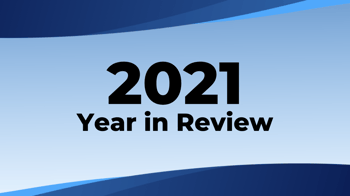A “Break” Down of Ad Breaks: Understanding CTV Ad Pods
Published by Amit Nigam on

Bringing elements of traditional TV to programmatic media buying and selling, ad pods bridge the gap between disparate viewing environments and help to deliver optimal ad experiences for CTV viewers.
The migration of advertising budgets from linear TV to connected TV (CTV) is closely following increases in ad-supported streaming. According to eMarketer, CTV advertising is forecasted to reach over $35 billion in spending in the U.S. by 2025. In the midst of this significant growth, media buyers and sellers alike are seeking to enhance the way in which CTV ads are bought and sold. And thus, a TV-centric concept – ad pods – has remerged to the forefront of industry conversation.
If you aren’t familiar with their history, ad pods were first formally introduced to the digital advertising ecosystem in 2012 via the IAB Tech Lab’s VAST 3.0 specification. At this time, streaming services were still nascent and lacked the capabilities needed to manage key considerations such as competitive separation, ad duplication, and frequency.
With the CTV ad market growing considerably within the last decade, and more recently within the last two years, the industry has become more focused on driving efficiency and delivering pristine viewer ad experiences in CTV. To support this endeavor, the IAB Tech Lab earlier this year released OpenRTB 2.6, a transaction protocol that includes features to support CTV buying and selling, including – you guessed it – new attributes and guides for ad pods.
As the sell-side ad server built for Convergent TV, we often receive questions about ad pods, how they can be best deployed, and the advantages they offer. Below, we’ve answered some of the most common questions we receive, to provide insight on how the adoption of the IAB Tech Lab’s oRTB 2.6 technical specification can help CTV publishers, advertisers, and viewers alike.
1. What are ad pods?Ad pods are a sequenced group of ads that play back-to-back within an ad break, most often in CTV and streaming environments. Using ad pods, programmers and publishers can receive multiple contiguous ads from a single ad request. Scheduled in pre-, mid-, and post-roll environments, ad pods resemble the type of commercial break you’d see in traditional TV, or hear within a radio structure.
Related to ad pods, pod bidding signals are an important feature of the oRTB 2.6 spec that allow key information about the pod and its impression opportunities to be shared among media buyers and sellers. This, for example, includes the sequence of ad impressions, total pod length, maximum number of ads within the pod, and more.
2. What are the different types of ad pods?
Within a structured ad pod, the media seller fully defines the number of ad slots, position in the pod, and respective duration. This gives the publisher full control over every aspect of the pod, but it is largely manual and can be somewhat time-consuming to construct.
Dynamic ad pods, by comparison, are more flexible. While the total duration and maximum number of ads are constrained within a dynamic ad pod, the number of ads and duration of each are indeterminate. This offers publishers more flexibility and efficiency in optimizing their selection of ads in order to fill a pod.
A hybrid ad pod is exactly what it sounds like, combining elements of both structured and dynamic pods. Hybrid ad pods are composed of slots with predetermined durations, along with undefined numbers and durations of individual ads.
3. What benefits do ad pods provide to media buyers and sellers?
Ad pods afford both publishers and advertisers more strategic and transparent ways of transacting in CTV.
For media sellers, ad pods and pod bidding signals allows for more strategic monetization, including the ability to:- Optimize inventory yield based on metrics like CPM per second.
- Reduce latency in CTV auctions.
- Provision slot-based targeting and pricing.
- Uphold key brand rules including competitive separation.
- Deliver premium viewer ad experiences by accounting for ad duplication and frequency.
- Increase win rates.
- Reduce infrastructure costs and trading volume.
- Execute key business rules, including competitive separation.
- Provision strategic buying opportunities to advertisers, including purchasing of specific slots.
Above all else, what's most important is that ad pods can enable more pristine ad experiences in CTV, which benefits publishers, advertisers, and viewers alike.
4. Why are ad pods so important in Convergent TV advertising?
As traditional and connected TV converge, ad pods – when paired with necessary ad serving technology – play an essential role in bridging the gap between disparate viewing environments. In addition to the benefits previously mentioned, ad pods and pod bidding signals make the real-time buying and selling of CTV media more akin to traditional TV, via support for key tenets like competitive separation and slot-based pricing.
What’s more, ad pods help to deliver pristine ad experiences to CTV viewers. The challenges and shortcomings of CTV advertising have been well-documented in recent years – from blank slates to timeouts to frequency issues – and the implementation of ad pods with powerful ad serving technology will help to solve for these issues.
If you’re increasingly operating in CTV, or looking to gain an edge, adoption of and support for ad pods, including via the oRTB 2.6 spec, is a must. To learn more about ad pods and how they enable a more efficient, viewer-friendly, and profitable way to buy and sell CTV media, reach out to us here:




